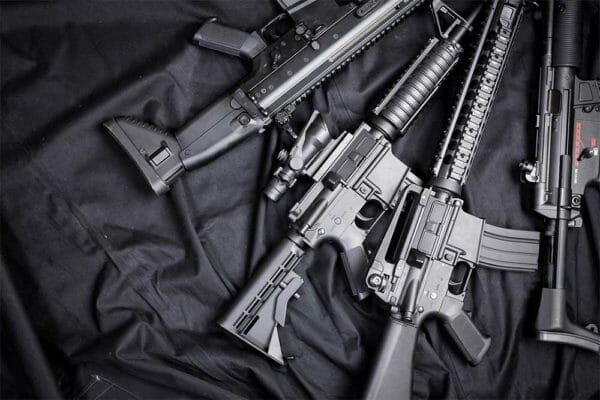Opinion
The United States Court of Appeals for the Fourth Circuit in Bianchi v. Brown issued an important order that is likely to backfire on the anti-gunners.
The court directed the parties to submit supplemental briefing addressing the following two questions:
- (1) does the determination of whether a weapon is “in common use” occur at the first or second step of Bruen’s text-and-history methodology, and
- (2) who bears the burden of establishing that a weapon is in common use. Heller and Bruen provide explicit answers to the questions posed by the Fourth Circuit, and those answers favor the protection of our Second Amendment rights.
Bianchi challenges the constitutionality of Maryland’s “assault weapons” ban, which seeks to outlaw the AR-15, among other semiautomatic firearms.

Tellingly, the original Fourth Circuit panel in Bianchi seemed poised to issue a pro-Second Amendment ruling, but before that occurred, the Fourth Circuit took the case en banc likely to avoid the possibility of such an outcome.
Bruen instructs that the constitutional inquiry starts with the text of the Second Amendment. This means that, at the outset, a lower court must determine whether the object of a firearm’s regulation is an “arm.”
At this first step, Bruen instructs that the burden is on the party challenging the firearms regulation to show that the item being banned is an “arm.” Heller defined “arms” as “weapons of offense or armor of defense.” There is no doubt that AR-15s and other semiautomatic rifles subject to the Maryland ban are “arms,” which means that the burden shifts to the government to show that the arms it seeks to ban are not “in common use” by Americans for lawful purposes (or are dangerous and unusual).
Bianchi is an “arms ban” case in the same way that Heller was an “arms ban” case, which struck down D.C.’s ban on owning a handgun, was an arms ban case. Heller provides the constitutional test to be applied by the lower courts in arms ban cases, and that is the “in common use” test.
There is a reason that the Fourth Circuit in Bianchi asked the parties to address when the “in common use” test comes into play.
If the “in common use” analysis occurs at the plain text level (text-first), the burden would be on the pro-Second Amendment plaintiffs to demonstrate that an arm is in common use. If, however, the inquiry occurs at the historical level (history-second), the burden rests on the government to prove that an arm is dangerous and unusual.
The anti-gun movement desperately wants the “in common use” analysis to occur at the plain text level where the party challenging the firearm regulation has the burden, but that is entirely contrary to the Supreme Court’s holding in Heller. How do we know? It’s plainly obvious from the decision itself.
The Supreme Court’s articulation of the “in common use” test was the result of the historical analysis undertaken by the Heller Court. That historical analysis confirmed, first, that only those arms that were considered both dangerous and unusual at the Founding could be regulated and, second, that the types of arms brought by citizens to militia duty were those commonly-used for lawful purposes. Because the “in common use” test arose from the historical inquiries conducted by the Supreme Court in Heller, the “in common use” analysis must occur at the historical level of the Bruen methodology where the burden rests on the government.
The two questions posed by the Fourth Circuit in Bianchi have already been answered by the Supreme Court.
Heller and Bruen make clear that the burden is on the government to show that an arm is not in common use, and that this inquiry takes place at the historical level of Bruen’s methodology. While the Fourth Circuit can continue to fabricate reasons for ruling against the Second Amendment and our fundamental freedoms, we hope that its errors will finally force the U.S. Supreme Court to intervene and remind the rogue lower courts that its decisions in Heller and Bruen are the law of the land.
For anyone interested in a more fulsome discussion of the “in common use” test and other games anti-gun courts play to avoid it, please check out my scholarly article in the Harvard Journal of Law and Public Policy: What Part Of “In Common Use” Don’t You Understand?: How Courts Have Defied Heller In Arms-Ban Cases—Again.
About Mark W Smith
Constitutional attorney and bestselling author Mark W. Smith, host of the Four Boxes Diner Second Amendment channel on Youtube, is a member of the U.S. Supreme Court Bar. His Second Amendment scholarship has been cited by many attorneys and judges, including by attorneys in legal briefs submitted to the Supreme Court in NYSRPA v. Bruen and in U.S. v. Rahimi.
His most recent book is DISARMED: What the Ukraine War Teaches Americans about the Right to Bear Arms.
Live Inventory Price Checker
|
|
A |
A |
$ A |





